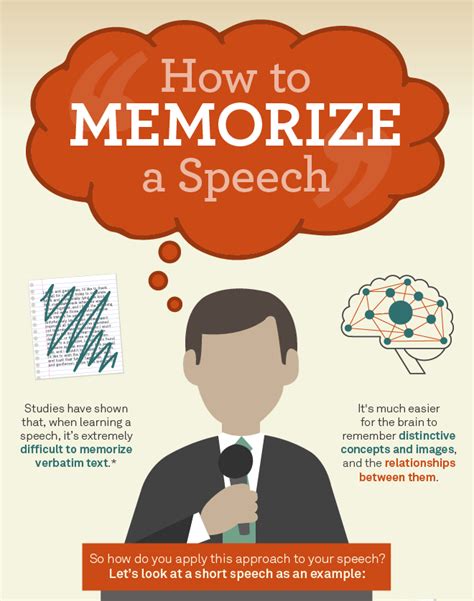How to Memorize a Speech: Techniques for Powerful Presentations
Memorizing a speech can seem daunting, but with the right techniques, it becomes achievable and even empowering. Delivering a memorized speech allows for stronger connection with your audience, improved eye contact, and a more natural delivery. This guide will equip you with effective strategies to memorize your speech effortlessly and confidently.
Understanding the Memorization Process
Before diving into techniques, it's crucial to understand how memory works. Memorization isn't just about rote learning; it involves comprehension, association, and repetition. The more meaningful your understanding of the speech content, the easier it will be to recall.
1. Deep Understanding is Key:
- Don't just read; understand. Focus on the core message and the underlying reasons behind each point. If you grasp the 'why' behind your words, memorization becomes significantly easier.
- Break it down. Divide your speech into smaller, manageable sections. This chunk-based approach makes memorization less overwhelming. Focus on mastering one section before moving on to the next.
- Relate to your experiences. Connect the speech content to your own life experiences or observations. This creates stronger personal associations, making it easier to remember.
Effective Memorization Techniques
Several techniques can enhance your ability to memorize a speech effectively:
2. The Power of Repetition:
- Read aloud repeatedly. This engages multiple senses (auditory and visual), reinforcing memory.
- Record yourself. Listening to your recorded speech helps identify areas needing improvement and reinforces memorization.
- Use flashcards. Create flashcards with key points or difficult phrases to aid in memorization. This is particularly helpful for specific data or statistics.
3. Active Recall Methods:
- Practice without notes. Regularly test your memory by reciting the speech without relying on your script. This strengthens recall and identifies weaknesses.
- Teach someone else. Explaining the concepts to another person reinforces your own understanding and memory.
- Use the "Teach Back" Method: After reading a section, close your notes and try to explain the content in your own words as if teaching it to someone else.
4. Incorporate Mnemonics:
- Use acronyms and acrostics. Create memorable acronyms from the first letters of key phrases or ideas in each section.
- Visual imagery. Associate each section with a vivid mental image. The more unusual and memorable the image, the better.
- Storytelling technique. Weave your points into a narrative; stories are inherently easier to remember than lists of facts.
Beyond Memorization: Delivery and Practice
Memorizing the speech is only half the battle. Effective delivery is equally crucial.
5. Practice, Practice, Practice:
- Practice in front of a mirror. This allows you to observe your body language and identify areas for improvement.
- Record your practice sessions. Analyze your delivery, identifying areas where you can improve pacing, intonation, and gestures.
- Practice in front of a small audience. Getting feedback from others helps identify areas for improvement and build confidence.
Handling Stage Fright and Memory Lapses
Even with thorough preparation, stage fright or memory lapses can occur.
6. Managing Stage Fright:
- Deep breathing exercises. Deep, controlled breaths can calm your nerves before and during the speech.
- Positive self-talk. Replace negative thoughts with positive affirmations to boost your confidence.
- Visualize success. Imagine yourself delivering a successful speech to build confidence.
7. Dealing with Memory Lapses:
- Don't panic. If you forget a line, pause briefly, take a deep breath, and try to recall the next point. The audience will likely not notice a small pause.
- Use prompts strategically. If you anticipate difficulty with specific sections, include subtle cues in your notes or environment.
- Embrace the moment. A little spontaneity can be engaging. Don't be afraid to connect with your audience in a natural way if you miss a word or two.
By implementing these strategies, you can effectively memorize your speech and deliver a compelling, confident presentation. Remember, consistent practice and a deep understanding of your material are the keys to success.
